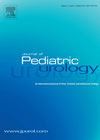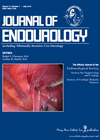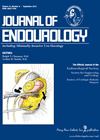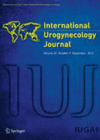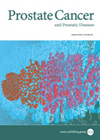
Journal Reviews archive for March 2014
Torsion of spermatic cord in children
This is an excellent review of ‘testicular’ torsion - which is said to occur in 1:4000 under 25-year-olds. Two age periods (adolescence and neonatal) are identified as having peak incidence. Acute torsion represents 27% of children with acute scrotum. The...
Lower pole vessels in children with PUJO: laparoscopic vascular hitch or dismembered pyeloplasty?
A crossing vessel accompanying pelvi-ureteric junction obstruction (PUJO) occurs in 25-50% of cases. The Hellstrom vascular hitch procedure was first described in 1951 and has regained popularity since 2003 in the era of laparoscopic surgery as it negates the need...
Needs of children with a chronic bladder in preparation for transfer to adult care
It is well recognised that transition from paediatric to adult practice is stressful for patients and parents. This paper describes a questionnaire-based study of 80 teenagers with chronic bladder disease (spina bifida exstrophy or other acquired neurogenic bladder condition) of...
Outcomes of preserving the foreskin during distal hypospadias
Hypospadias surgery continues to tax the minds of paediatric urologists. Increasingly distal hypospadias surgery is becoming more and more conservative (in some cases, carrying out only foreskin reconstruction and leaving a mild hypospadias) and the role of foreskin reconstruction as...
PUJO: Hellstrom principle revisited
This paper describes the result of four out of twenty-three cases (two males, two females) of pelvi-ureteric junction obstruction - PUJO - (mean age 18.25 years, range 16-20), mean follow-up two years (range six months – three years) that were...
Familial testicular torsion: a meta-analysis suggests inheritance
This paper describes a meta-analysis using an electronic database search with keywords to elucidate epidemiology and presentation of familial testicular torsion. The authors found that up to 10% of patients with testicular torsion have an affected first degree relative. Family...
Health-related quality of life in men with corrected hypospadias
More and more studies on long-term outcomes of paediatric operations are being published, many of which concentrate on health-related quality of life (HRQol) scores. This paper compared 45 men with corrected hypospadias (mean age 26.2 years +/- 5.1 years) with...
Prilocaine irrigation for pain relief after TURP
Transurethral resection of the prostate (TURP) is one of the commonest procedures undertaken by urologists. There are well known complications following the procedure which commonly include haematuria but also TUR syndrome, failure to pass urine and infections, amongst others. The...
A new haemostatic agent in tubeless PCNL
Tubeless percutaneous nephrolithotomy (PCNL) is increasingly being used in carefully selected patients to reduce hospital stay and analgesia requirements, especially in those with little bleeding who become stone free or have insignificant residual fragments (usually <4mm). Various agents have been...
A phase II dose-ranging study of mirabegron in patients with OAB
This was a multinational, multicentre, randomised, double–blind, double-dummy, parallel group placebo- and active- controlled phase II study. The study enrolled 1108 men and women aged 18 and over. The criteria were: patients must have had overactive blader (OAB) symptoms for...
Is silodosin the new first-line treatment for LUTS secondary to BPH?
This meta-analysis aims to evaluate the safety profile and non-inferiority of silodosin when compared to tamsulosin for the treatment of male lower urinary tract symptoms (LUTS) secondary to benign prostatic hyperplasia (BPH). As the prostate and bladder neck are abound...

